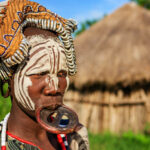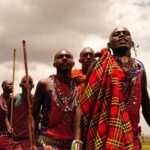Namibia is a country located in southwestern Africa. It gained independence from South Africa in 1990 and has since been a stable democracy. The capital city is Windhoek. Namibia is known for its diverse landscapes, including the Namib Desert, one of the oldest deserts in the world, as well as the Skeleton Coast and the Etosha National Park, which are popular tourist destinations. The country has aNamibia rich cultural heritage, with various ethnic groups and languages spoken, including English and Afrikaans. The economy relies on mining, agriculture, and tourism.
Namibia’s culture is diverse and influenced by its history, ethnic groups, and traditions. The country is home to several distinct tribes, each with its unique customs and languages. Here are some key aspects of Namibia’s culture:
1. Ethnic Diversity: Namibia is home to numerous ethnic groups, including the Ovambo, Herero, Himba, Damara, Nama, and San (Bushmen). Each group has its own language, traditions, and rituals, contributing to the country’s cultural richness.
2. Languages: English is the official language, inherited from the colonial era. However, many Namibians speak other languages like Oshiwambo, Herero, Nama, Damara, and others as their mother tongues.
3. Traditional Dress: Namibian tribes have distinct traditional clothing that reflects their cultural identity. For example, the Herero women wear elaborate Victorian-style dresses, while the Himba people are known for their ochre-covered skin and unique hairstyles.
4. Music and Dance: Music and dance play a significant role in Namibian culture. Traditional music often includes drums, singing, and storytelling, conveying history, folklore, and social values. Some tribes have unique dance styles, used for celebrations, rituals, and entertainment.
5. Art and Craftsmanship: Namibian artisans produce intricate crafts like beadwork, pottery, carvings, and woven items. These crafts often carry cultural significance and are sold in local markets and tourist shops.
6. Cuisine: Traditional Namibian cuisine consists of a variety of dishes, influenced by the available resources and tribal traditions. Some common ingredients include millet, sorghum, meat (such as beef, game, and fish), and vegetables.
7. Indigenous Knowledge: The San people, also known as the Bushmen, have a rich knowledge of the land and wildlife, passed down through generations. They use their expertise in hunting, tracking, and herbal medicine.
8. Festivals and Celebrations: Namibians celebrate various cultural festivals and events throughout the year. One of the significant celebrations is the Owambo festival called “Omusango,” a gathering of the Ovambo people to celebrate their heritage.
9. Respect for Nature: Many Namibian tribes have a deep connection with nature and hold a strong belief in the spiritual significance of the land and wildlife. Conservation efforts often include incorporating traditional practices to preserve the environment.
Namibia’s cultural diversity and traditions contribute to a vibrant society, making it an intriguing and culturally rich destination for travelers and researchers alike.



















Add Comment